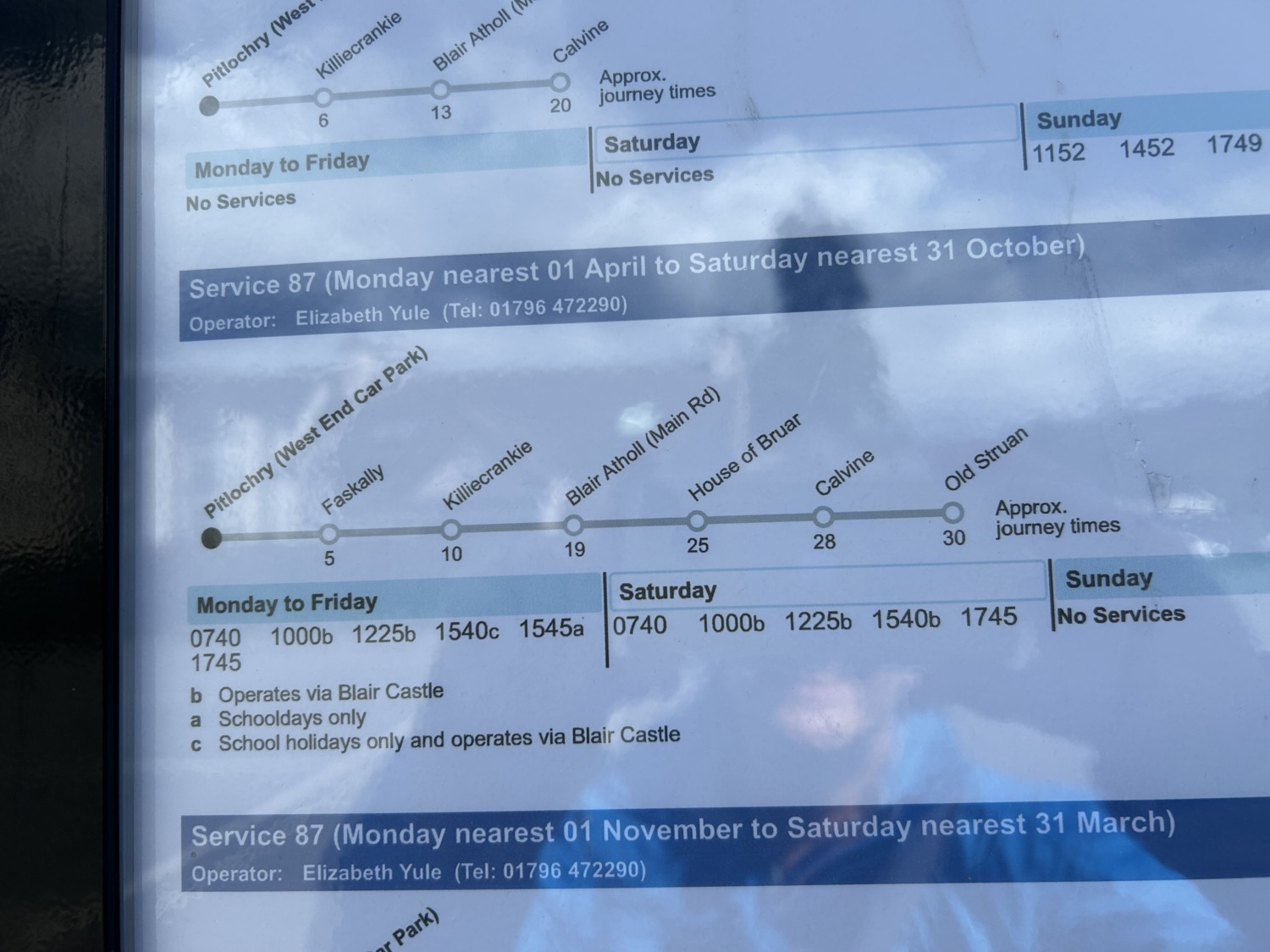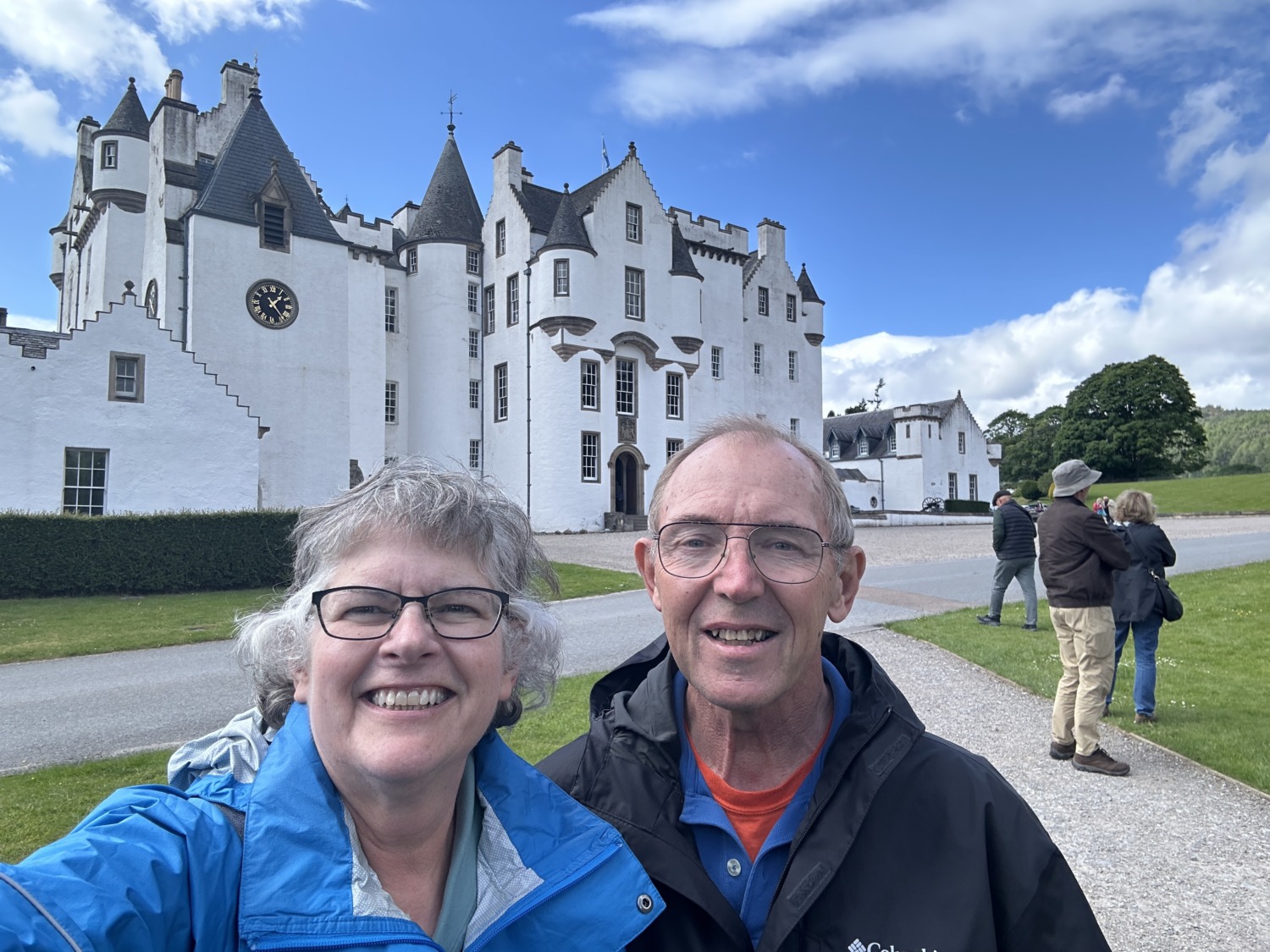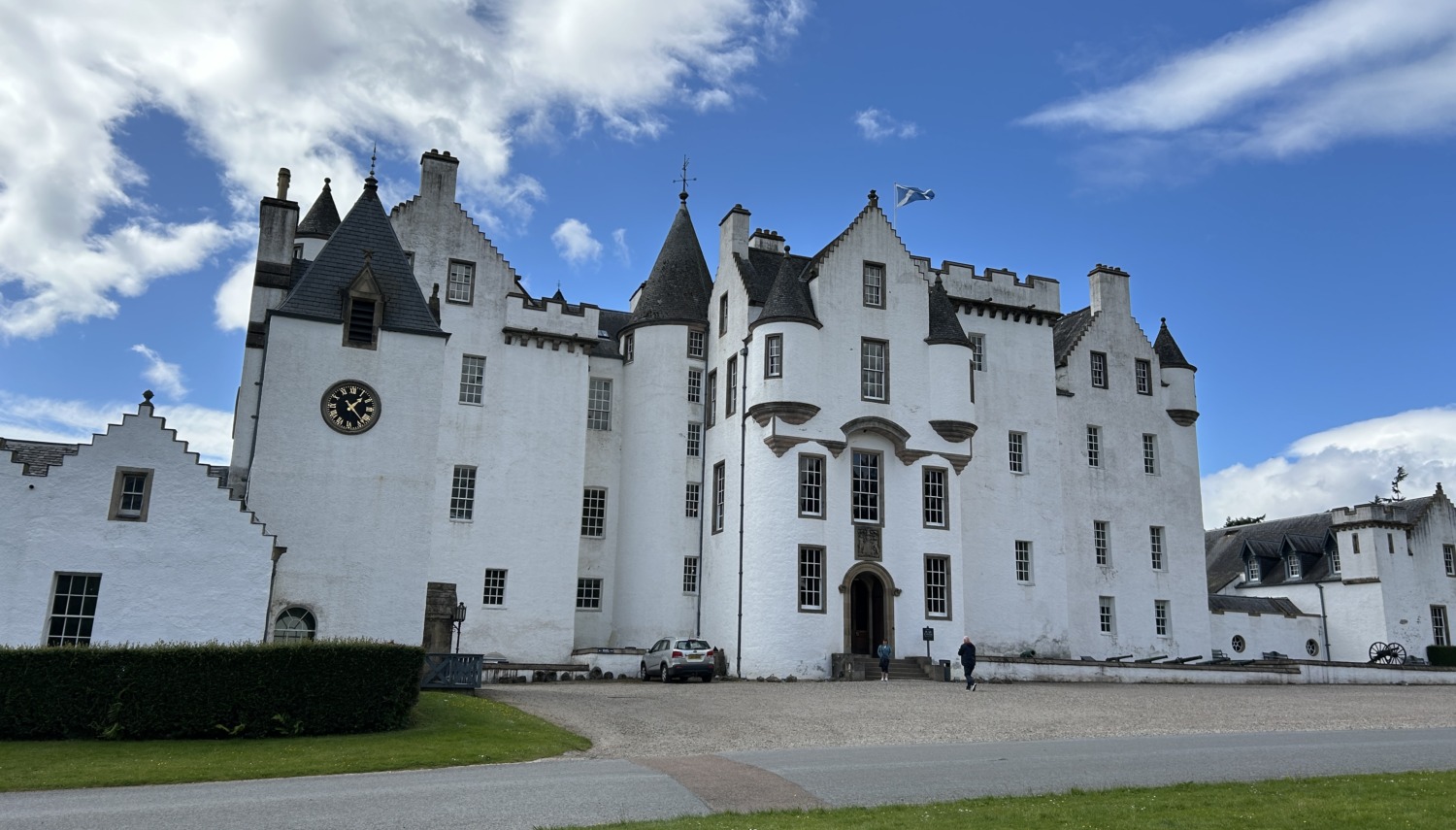The day after Edinburgh, we headed on north into the Scottish Highlands. The scenery was beautiful but it was a long travel day.

Our first stop was St Andrews, home of the famous golf course. Golf has been played on this course for over 600 years. I snapped a picture of the 18th hole, but Tom and I were more interested in taking a walk. We walked around a seaside promontory past a lot of historic buildings. St. Andrews University takes up a lot of the town. We saw the ruins of the St Andrews Castle, and the more modern castle, now a hotel.

As we continued around the promontory, we admired the view. We could see people down on the rocky shore. Two men were bathing in a pool made by stones from the beach. We walked around the ruins of St Andrews Cathedral and Abbey. The tower is still pretty impressive, despite the church having been destroyed 500 years ago.
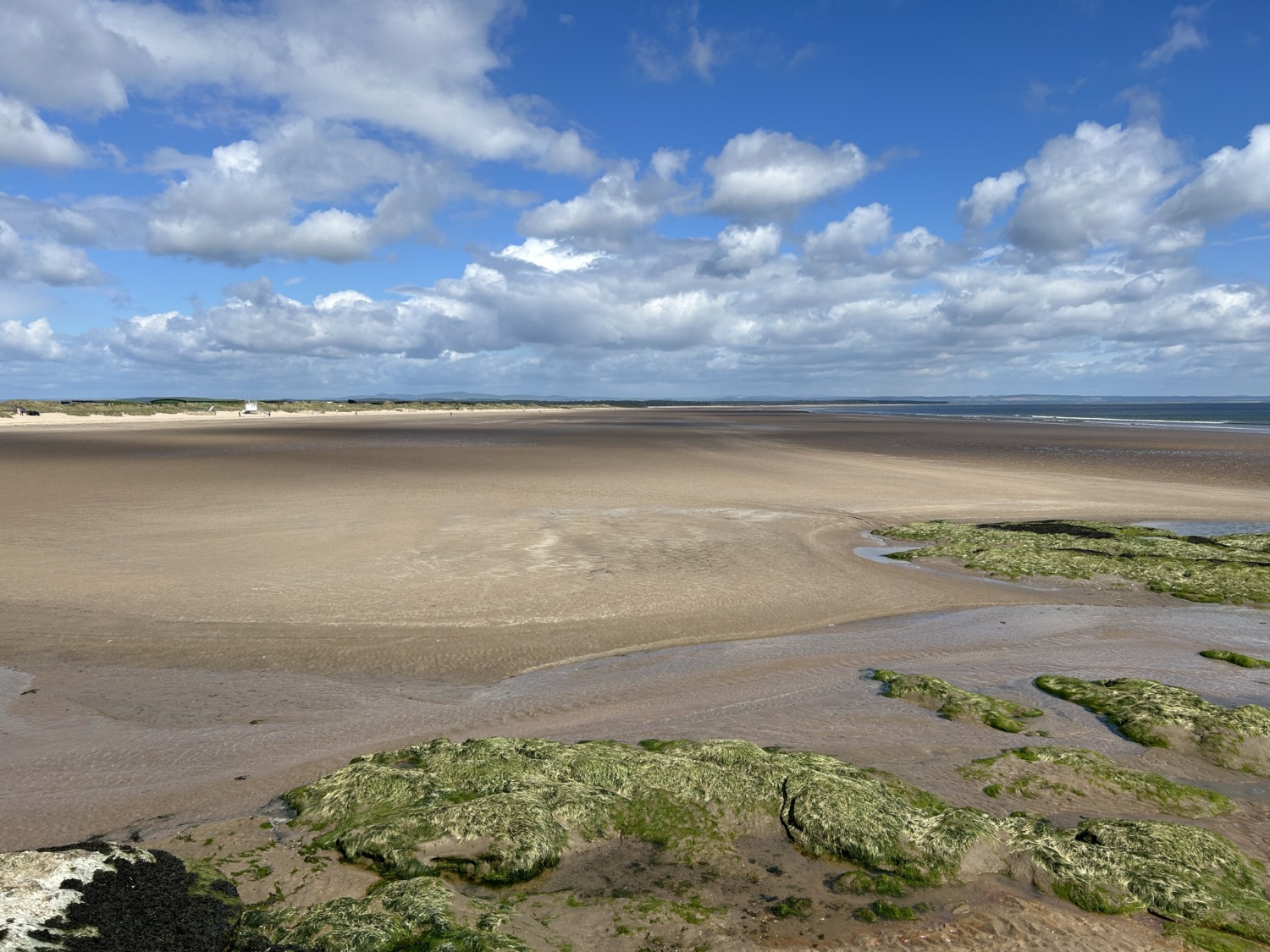
After walking through downtown, we checked out the beach. There is a wide, sandy beach just north of the promontory. The beach was the place where the opening scenes of “Chariots of Fire” was filmed. We did not go for a run, although we enjoyed the lovely view.
Our lunch stop was the wee village of Pitlochry. My spell checker hates these Scottish place names. We see a lot of funny names as we drive around in the bus, especially in the Scottish Highlands. One of the best was the town of Giggleswick. Just reading the name makes me giggle. I took this picture of the towns along a bus route. Pitlochry, Faskally, Killiecrankie, Blair Atholl, House of Bruar, Calvin’s, and Old Struan.
Pitlochry wasn’t a great town, but there were plenty of places to get lunch. Tom and I had rolls and chicken left over from our supper the night before. We added some cheese and lettuce and had nice sandwiches for lunch. We ate them on a park bench close to a charming little creek.
After lunch we headed to Blair Castle, home of the Atholl family and the ancestral home of Clan Murray for 750 years. The Duke of Atholl is the leader of Clan Murray. The castle was started in 1269, but only the tower remains from that original building. Touring the opulent home was very interesting. Each of the rooms we saw was decorated with furnishings of the era of one of the Dukes. They are up to the 12th Duke, but the last two Dukes of Atholl have lived in South Africa. Because of this, the 11th Duke gave the castle to the Scottish Trust, although he does come to live in it once a year.
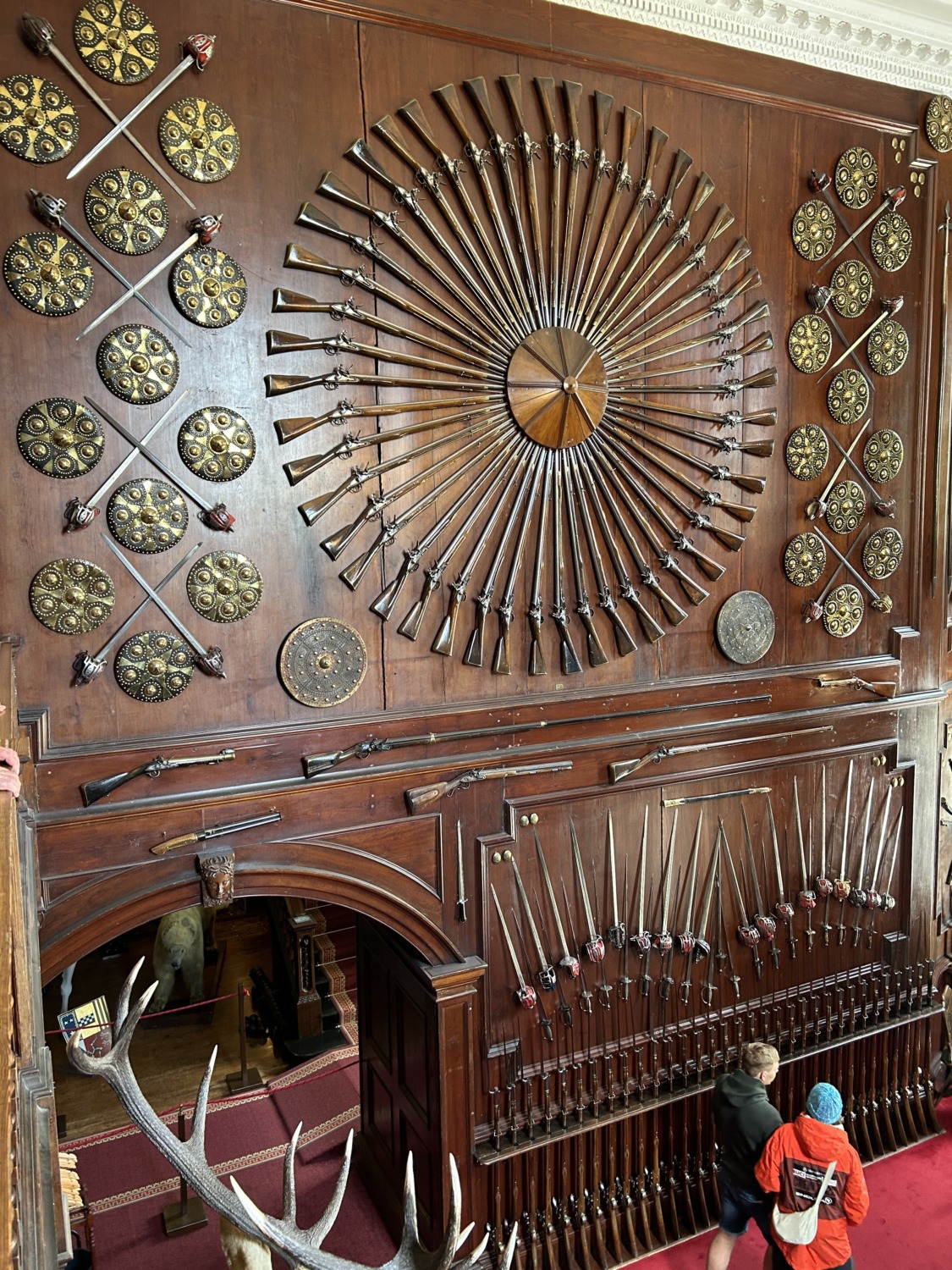
The reason the Duke returns every year is to inspect his army. Historically each of the clans had their own armies, with all the men of the clan in the army. After the defeat of the Jacobites at the Battle of Culloden, each of the clans was required to disband their army. Queen Victoria came to Blair Castle to give birth out of the public eye in 1844. She enjoyed her stay so much that she decided to grant a boon to the Duke. He was allowed to reinstate his army. The Atholl Highlanders is a ceremonial infantry regiment but is an important part of the heritage of the people in the area.
After our time at Blair Castle, we drove to the site of the Battle of Culloden. It was here that the Jacobite army took their last stand to reclaim the throne of Britain from the Hanoverians for a Stuart king. The Jacobites fought to restore the exiled James VIII as king and were led by Prince Charles Edward Stuart (bonnie Prince Charlie). George II’s government army (led by the Duke of Cumberland, George’s son) was equally determined to stop this happening.
The two armies met at Culloden on April 16, 1746. Both sides included Scots and English soldiers. In an hour, however, the battle was over with the Jacobites soundly defeated. Over 1,250 Jacobites were killed, compared to only 50 of Cumberland’s army. This is Cumberland’s famous victory, and the reason so many things in the United States are named after him. Cumberland Island. Cumberland Gap. The Cumberland River.

Today there is a very nice Visitors Center at the Culloden Battlefield. We had 15 minutes to see the movie and look at the museum before the Visitors Center closed. The posted closing time was 6 p.m. but it was closing an hour early due to staff shortages. After our quick perusal of the Visitors Center, Tom and I walked the battlefield. It is a large field where Cumberland’s troops had the high, dry ground, and the Jacobites had to run uphill through a bog. We saw the Jacobite memorial and the mass graves of some of the clans. Then we walked along the Cumberland battleline. It was very evocative.
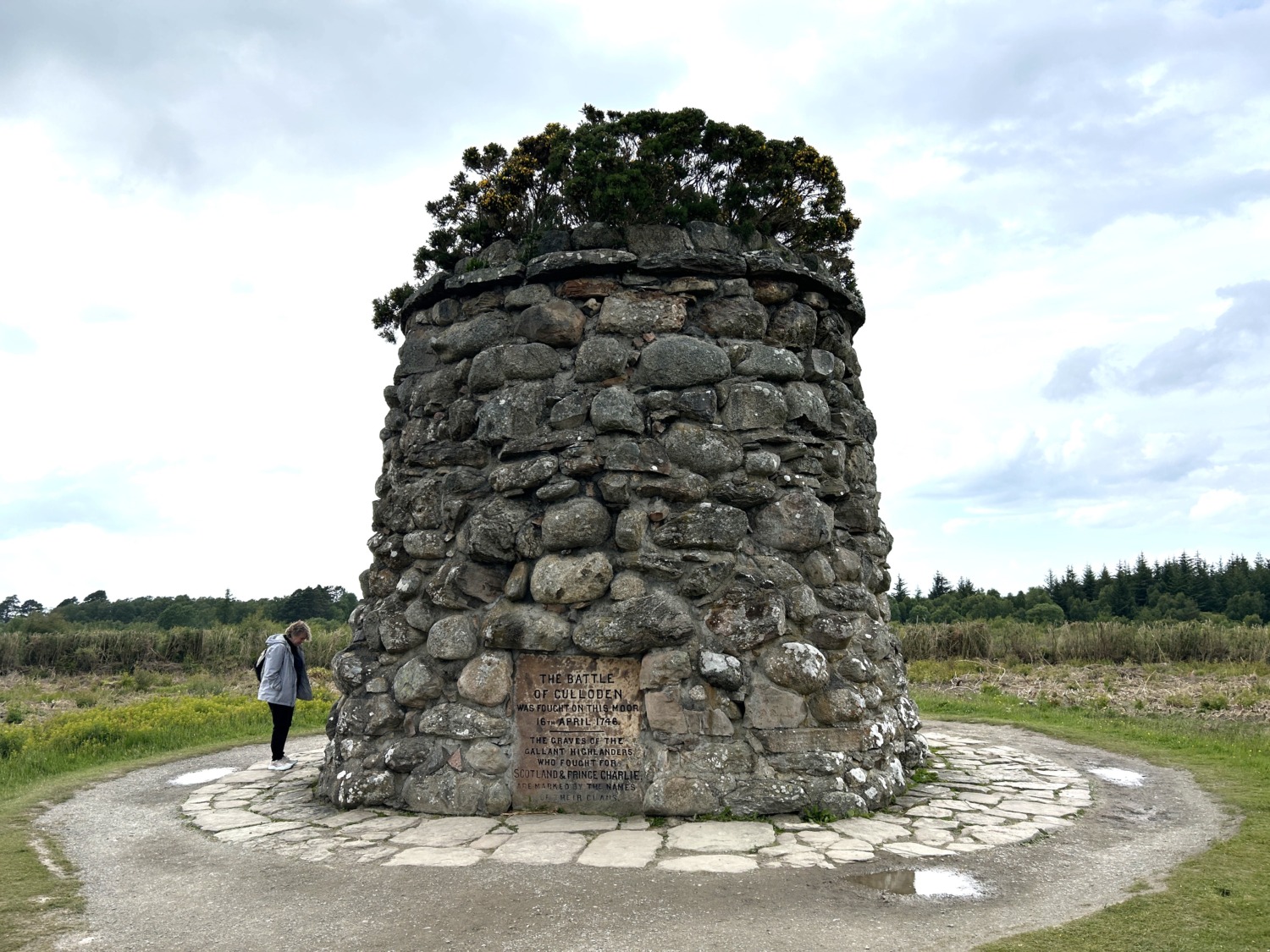
We climbed back on the tour bus at our appointed time and drove to Inverness to our hotel. Dinners are included about half of the days of our tour. There is always plenty of food, but the choices are very much the same from place to place. We have a starter – soup, pate or smoked fish. Then there is an entree – chicken, fish, or vegetarian, served on a bed of mashed potatoes. Finally we choose a dessert – something chocolate, fruit and cheese, or the specialty of the area. There aren’t many vegetables or salads. Tom and I don’t even want to guess how much sodium is in all these foods.
Supper is usually over around 8 or 8:30. Tom and I like to take a walk after supper. We are not used to eating so late and the walk helps our stomachs settle before bed. Then off to dreamland for an early start the next day.
The Scottish Highlands are a beautiful place, with lots of rugged scenery and picturesque small towns. Tom and I look forward to exploring them some more.

